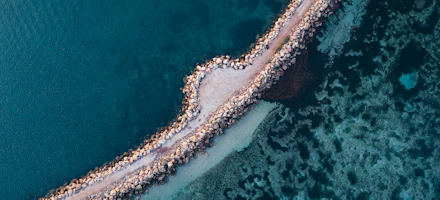
Kalbarri
Kalbarri is Western Australia's outdoor holiday playground and home to the ancient Kalbarri National Park.
The town is encircled by two distinctly different landscapes, to the east of the town the 400 million year old gorges of the Kalbarri National Park and to the west the towering Coastal Cliffs which plummet into the ocean below. Kalbarri offers a wealth of activities and attractions from swimming, surfing, hiking, fishing and whale watching. Meet Kalbarri’s resident pelicans each morning at 08:45am, as they make their way to the grassed area on the foreshore near the intersections of Grey and Wood Streets. Here, local volunteers feed the pelicans whilst spectators watch on. Fun fact: This tradition began with a local Kalbarri fisherman who cleaned his catch and threw the scraps to the pelicans.
If you are looking for fresh, local seafood and a locally brewed bevy, then head to Finlay's Kalbarri. Enjoy the rustic dining experience along with locally brewed beer from the on-site microbrewery. With large eucalyptus trees providing shade from the warm summer sun, authentic dirt floors and eclectic furniture, Finlay’s provides the perfect outdoor setting for a uniquely Australian dining experience. The newly developed Nature Playground on the Kalbarri Foreshore is an ideal activity for families. The playground features an impressive flying fox and wooden lookout tower, with shady trees protecting the children from the sun. Parents can relax at picnic tables, with cafés and restaurants nearby.
Kalbarri National Park
Kalbarri National Park is a short drive out of town offering superb walking trails and boasts awe-inspiring displays of wildflowers from July to October each year. Best known for the iconic Nature's Window and new Skywalk, there are 14 sites within the Park including easy trails like Ross Graham Lookout and Hawk's Head Lookout, and the more adventurous hiking trails of The Loop and Z Bend. There are a range of land and water tours to help you enjoy the Park.
A scenic flight over the National Park's Coastal Cliffs offers a dramatic perspective and a true impression of the area’s immense scope and scale. Witness the wonders of the Kalbarri National Park, nearby Pink Lake and the Houtman Abrolhos Islands from the best possible vantage point - the air!
Wildflowers
From July until October, around 1000 species of wildflowers progressively burst into bloom around Kalbarri and within Kalbarri National Park, particularly along the tops of coastal cliffs and gorges. Many species are endemic to the region including the Kalbarri spider orchid, cats paw and Murchison rose. You can find out what's blooming here, and contact the Kalbarri Visitor Centre for more detailed information on where to find seasonal wildflowers.
Swimming, surfing and fishing
Blue Holes Beach is renowned for its exceptional snorkelling and thriving marine life. The area is a protected fish habitat, featuring sections of reef that are permanently submerged by the ocean (sub-tidal) as well as areas that are exposed at low tide (intertidal). In order to preserve the unique environment at Blue Holes, fishing is totally banned. Make the most of the clear, tranquil waters of Chinaman’s Beach on the Murchison River. This swimming spot in the heart of Kalbarri is popular among families due to its safe swimming conditions
Jacques Point, (locally known as “Jakes”) is renowned for its superb left-hand reef break along the point and is a favourite among experienced surfers. Spectators can join in on the action by watching from the beach, and less experienced surfers can opt to surf in Jakes Bay.
Fishing in Kalbarri boasts some of WA’s best shore and boat angling. Try estuary fishing for whiting and black bream or drop a net to yield blue swimmer and mud crabs. Fishing charters are popular, satisfying both the serious angler and the novice. They regularly return with a bounty of fish including mackerel, tuna, snapper, dhufish, coral trout and bald chin groper. Note: There is an annual West Coast Demersal fishing ban from Cervantes to Kalbarri from 15 October to 15 December inclusive. Visit fish.wa.gov.au for further information.


















































